- All
- Product Name
- Product Keyword
- Product Model
- Product Summary
- Product Description
- Multi Field Search
 English
English English
English| Availability: | |
|---|---|
| Quantity: | |
37
KSeng
KSeng-37
KST-2P Single-axis tracking bracket refers to the rotation around a one-dimensional axis, automatically tracking the sunlight to change the position angle of the solar panel, to achieve the maximization of the intensity of the sun's rays perpendicular to the battery panel, thus improving the photovoltaic conversion rate.
Product Description:
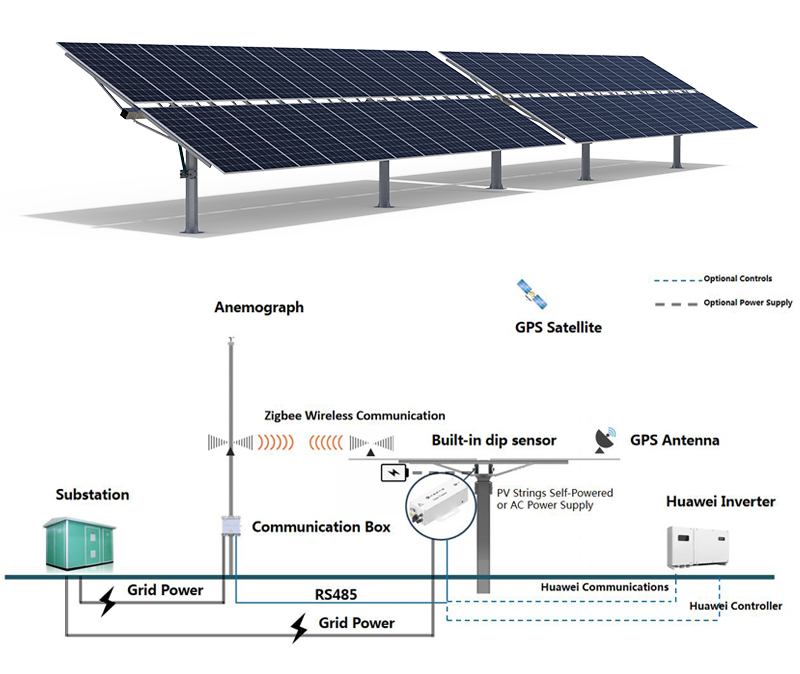
Specification
| Tracking Structure Parameters |
| Tracking Technology | Dual-Horizontal flat single-axis tracking system | Maximum capacity per row | 48kW |
| PV-Modules quantity per row | 45 PCS (2Px45) or 30PCS(2PX30) | Tracking range | ±45°to ±60° |
| Tracking accuracy | ±1° | Terrain Adaptability | 10°north-south, east -west unlimited |
| Protection of wind speed | 18m/s | Foundation form | Concrete (customizable all steel foundation) |
| Tracking Controller Parameters |
| Control system | MCU | Communication type | RS485 or wireless Zigbee |
| Night stow mode | Have | Backtracking algorithm | Have |
| Overload prevention | Have | Self trouble checking Function | Have |
| System voltage | DC24 | Drive System | Slewing drive |
| Power Acquisition Mode | External Supply/Self-Powered supply | Control algorithm | Astronomical algorithm + closed loop(AI Control) |
Advantages
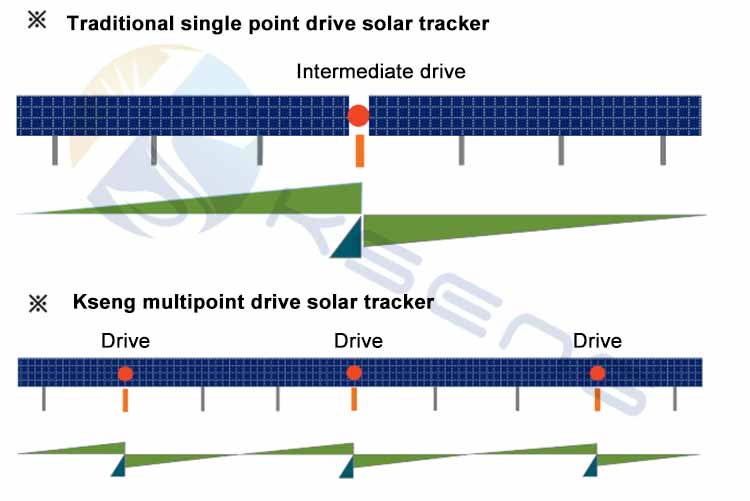
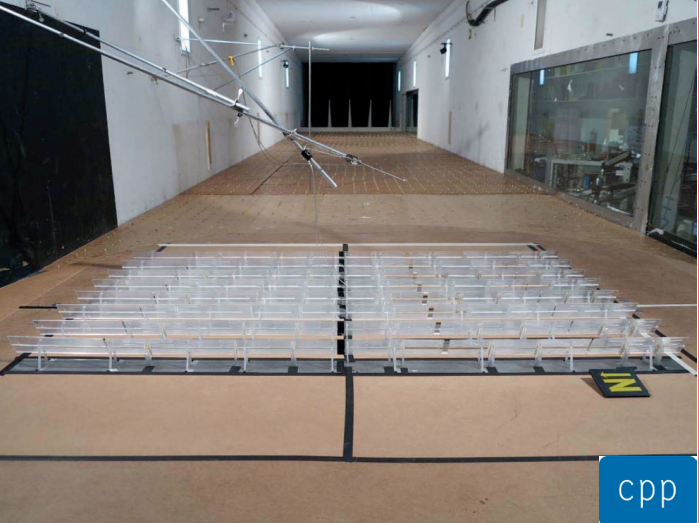
Main Structural Parts
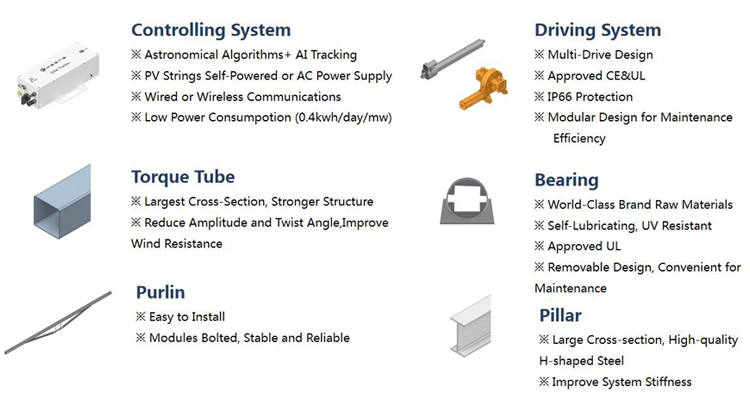
We have different scheme to meet different customer's requirement.
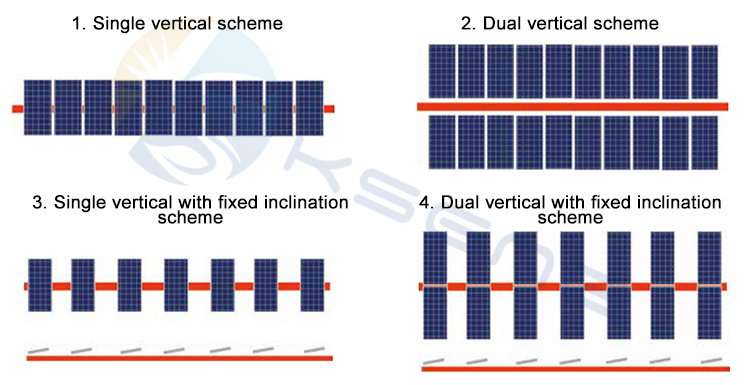
Chase the Sun, Capture More – With Kseng Solar Trackers
1.Increased energy production: Single-axis solar tracking system allow solar panels to follow the sun's movement throughout the day, maximizing energy production compared to fixed mounts.
2. Improved efficiency: By adjusting the tilt angle according to the sun's position, solar panel sun tracking system optimize the solar panel's exposure to sunlight, increasing overall system efficiency.
3. Enhanced ROI: The higher energy production from solar panel tracking system can result in a faster return on investment for solar installations.
4. Adaptability to changing conditions: sun tracking solar system can adjust the panel's orientation to accommodate seasonal changes in the sun's path, ensuring optimal energy generation year-round.
5. Cost-effective option: Despite the additional moving parts, pv solar tracking system can still be a cost-effective choice due to the increased energy production they offer.
Project:
![]()
Solar Tracker FAQ:
Q1. What are the applicable scenarios for single-axis solar tracking racking systems?
A1.Single-axis tracking system is suitable for low to mid-high latitude areas, especially in the environment of flat terrain and stable sunlight conditions. For example, plain areas or areas with abundant solar energy resources are ideal application scenarios.
Q2. What are the disadvantages of single-axis solar tracking racking system?
A2.In sunny conditions, the energy output of single-axis tracking system may be lower than dual-axis system.
In complex terrain or areas with large variations in solar altitude and azimuth, the performance of single-axis systems may not be as good as dual-axis systems.
Q3. What are the maintenance costs of single-axis solar tracking racking systems?
A3.The maintenance cost of single-axis system is relatively low because of its simple structure and low failure rate. However, harsh environments such as wind and sand can cause damage to the tracking axis and require regular maintenance.
KST-2P Single-axis tracking bracket refers to the rotation around a one-dimensional axis, automatically tracking the sunlight to change the position angle of the solar panel, to achieve the maximization of the intensity of the sun's rays perpendicular to the battery panel, thus improving the photovoltaic conversion rate.
Product Description:

Specification
| Tracking Structure Parameters |
| Tracking Technology | Dual-Horizontal flat single-axis tracking system | Maximum capacity per row | 48kW |
| PV-Modules quantity per row | 45 PCS (2Px45) or 30PCS(2PX30) | Tracking range | ±45°to ±60° |
| Tracking accuracy | ±1° | Terrain Adaptability | 10°north-south, east -west unlimited |
| Protection of wind speed | 18m/s | Foundation form | Concrete (customizable all steel foundation) |
| Tracking Controller Parameters |
| Control system | MCU | Communication type | RS485 or wireless Zigbee |
| Night stow mode | Have | Backtracking algorithm | Have |
| Overload prevention | Have | Self trouble checking Function | Have |
| System voltage | DC24 | Drive System | Slewing drive |
| Power Acquisition Mode | External Supply/Self-Powered supply | Control algorithm | Astronomical algorithm + closed loop(AI Control) |
Advantages


Main Structural Parts

We have different scheme to meet different customer's requirement.

Chase the Sun, Capture More – With Kseng Solar Trackers
1.Increased energy production: Single-axis solar tracking system allow solar panels to follow the sun's movement throughout the day, maximizing energy production compared to fixed mounts.
2. Improved efficiency: By adjusting the tilt angle according to the sun's position, solar panel sun tracking system optimize the solar panel's exposure to sunlight, increasing overall system efficiency.
3. Enhanced ROI: The higher energy production from solar panel tracking system can result in a faster return on investment for solar installations.
4. Adaptability to changing conditions: sun tracking solar system can adjust the panel's orientation to accommodate seasonal changes in the sun's path, ensuring optimal energy generation year-round.
5. Cost-effective option: Despite the additional moving parts, pv solar tracking system can still be a cost-effective choice due to the increased energy production they offer.
Project:
![]()
Solar Tracker FAQ:
Q1. What are the applicable scenarios for single-axis solar tracking racking systems?
A1.Single-axis tracking system is suitable for low to mid-high latitude areas, especially in the environment of flat terrain and stable sunlight conditions. For example, plain areas or areas with abundant solar energy resources are ideal application scenarios.
Q2. What are the disadvantages of single-axis solar tracking racking system?
A2.In sunny conditions, the energy output of single-axis tracking system may be lower than dual-axis system.
In complex terrain or areas with large variations in solar altitude and azimuth, the performance of single-axis systems may not be as good as dual-axis systems.
Q3. What are the maintenance costs of single-axis solar tracking racking systems?
A3.The maintenance cost of single-axis system is relatively low because of its simple structure and low failure rate. However, harsh environments such as wind and sand can cause damage to the tracking axis and require regular maintenance.